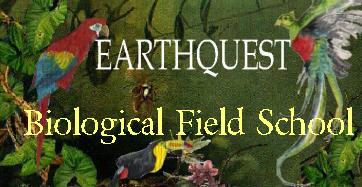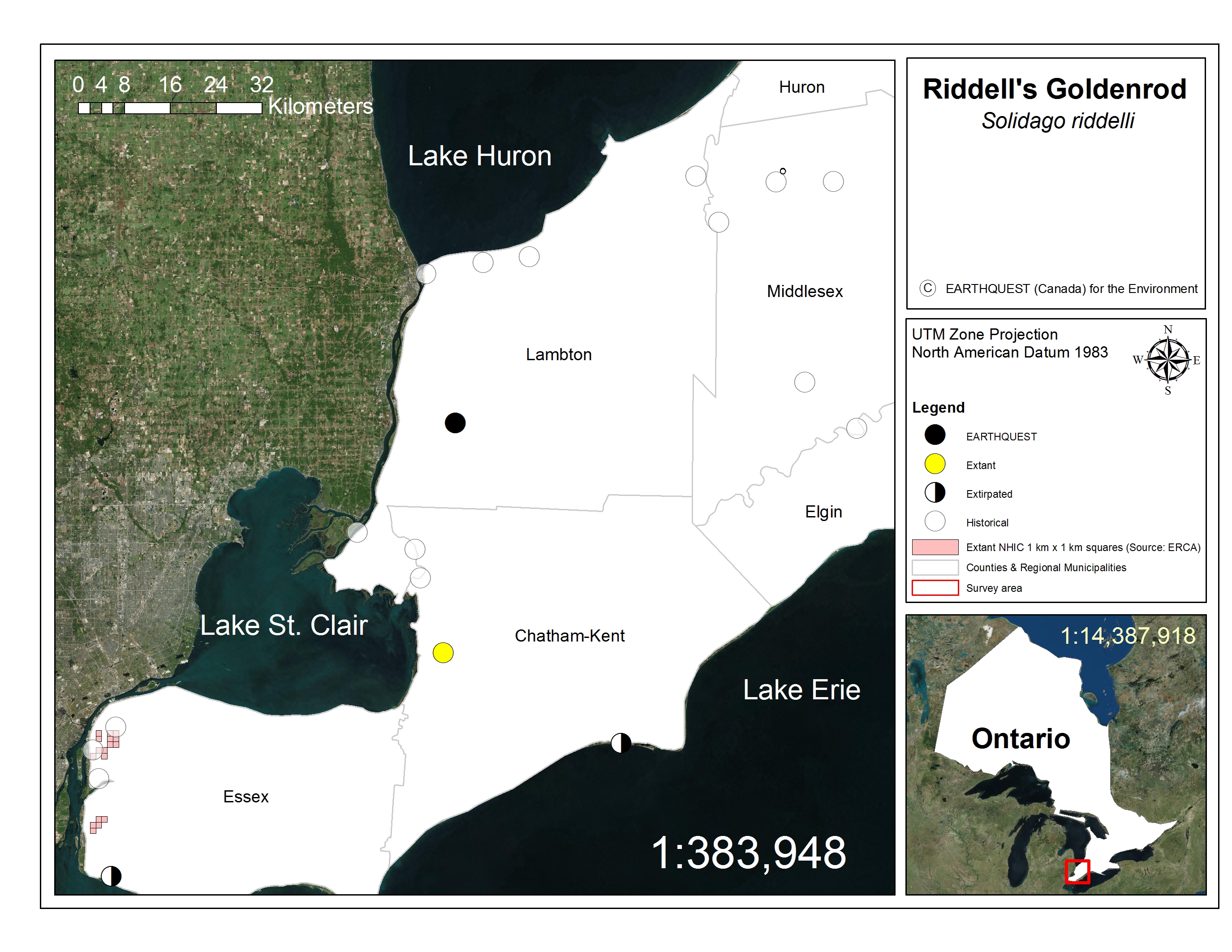
Summer | ||||||||||||
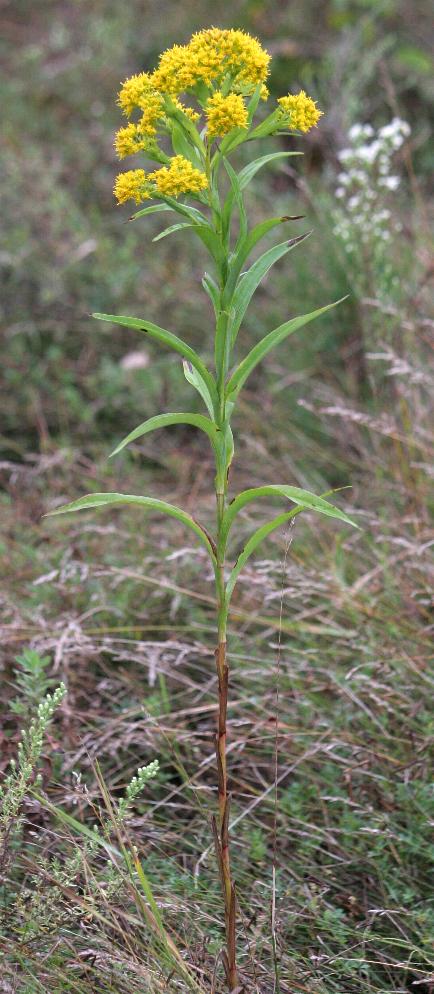 |
Bottom leaf
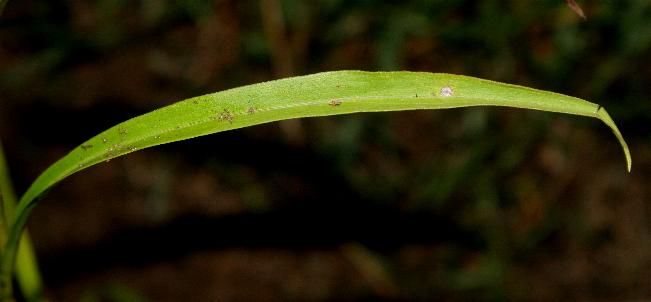 Middle leaf
| 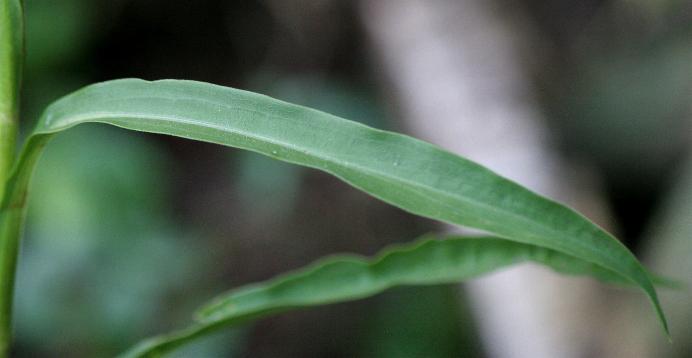 Photo: Dave Jolly Upper leaf
| 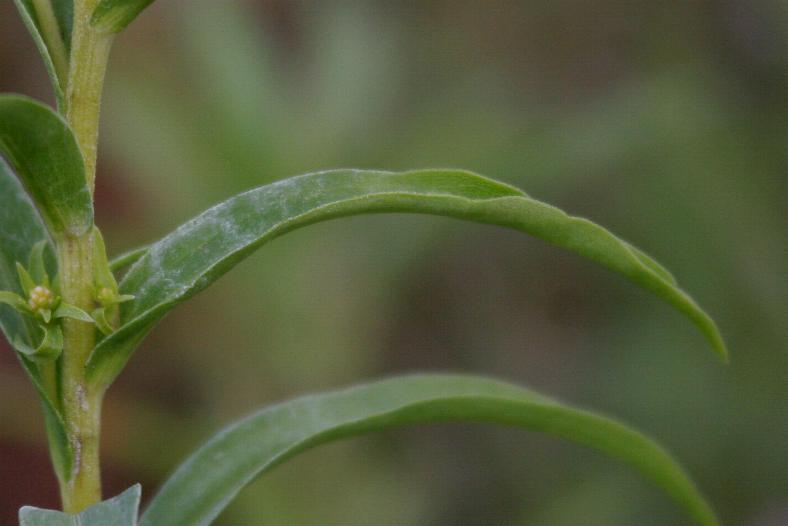 Photo: Dave Jolly Flower
|
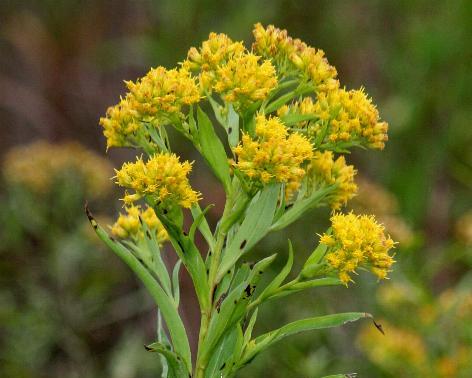 Photo: Dave Jolly Winter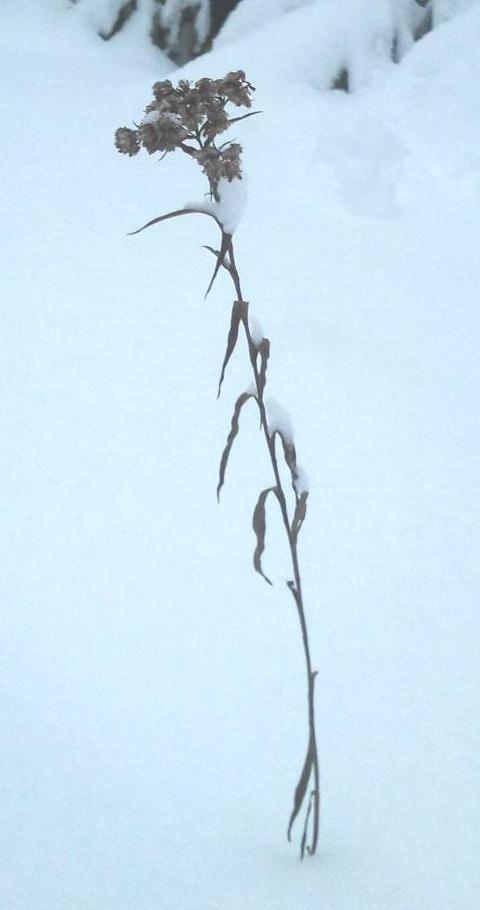
Flowering period: The peak flowering period is in the month of September from the 13th to 29th (EARTHQUEST 2015, Jolly 2018).
5 Second Rule Identification: One of the few goldenrods with a flat-topped flowerhead arrangement, multiple linear parallel veined leaves (folded at mid-rib).
Biology and Ecology: A detailed account will be provided at a later date.
Population Size: A population size of Riddell's Goldenrod is unknown. Approximately 16 sites with extant, historical and extirpated populations occur. Twenty one Natural Heritage Information Centre Element Occurrences exist between 1846 and 1997.
Habitat & Soils: wet, marshy ground and old fields,
prairies (MNRF 2015). Detailed Ecological Land Classification vegetation characteristics are lacking for Ontario populations. Two populations in Essex region and Lambton county were found growing in Fresh - Moist Forb Tallgrass Prairie Ecosite (MEFM3) and Fresh - Moist Mixed Tallgrass Prairie Ecosite (MEMM2), respectively (Jolly 2015).
Threats: The greatest threat is conversion of prairie habitat to farmland and urban development. Some populations along abandoned railway lines are threatened by a combination of recreational use such as hiking, and natural succession by other plants (MNRF 2018).
Recovery: Since this is a provincially and federally special concern species no environmental legislation protects it, or it's habitat.
Biometrics: Individuals ranging in size from 40 - 100 cm in height (Jolly 2015). Leaves are sub-oppositely to alternately arranged: bottom leaf; 30 - 32 long cm by 3.4 cm wide, middle leaf; 7 - 12.3 cm long by 1.2 x 2.2 cm wide, upper leaf; 5 - 6.9 cm long by 0.8 x 1.1 cm wide.
Environmental Protection: This species receives no provincial or federal protection.
Confusing look-a-likes: This species closely resembles Ohio Goldenrod (Solidago ohioensis), except the leaves are folded, with basal leaves narrower and more lanceolate.
References:
Distribution: To date, current, historical and extirpated populations have been found in 4 counties and regional municipalities; Chatham-Kent, Essex, Lambton, and Middlesex.
<
$35.00 CAD + shipping and handling ($15 CAD within Canada, $20 CAN to the USA) 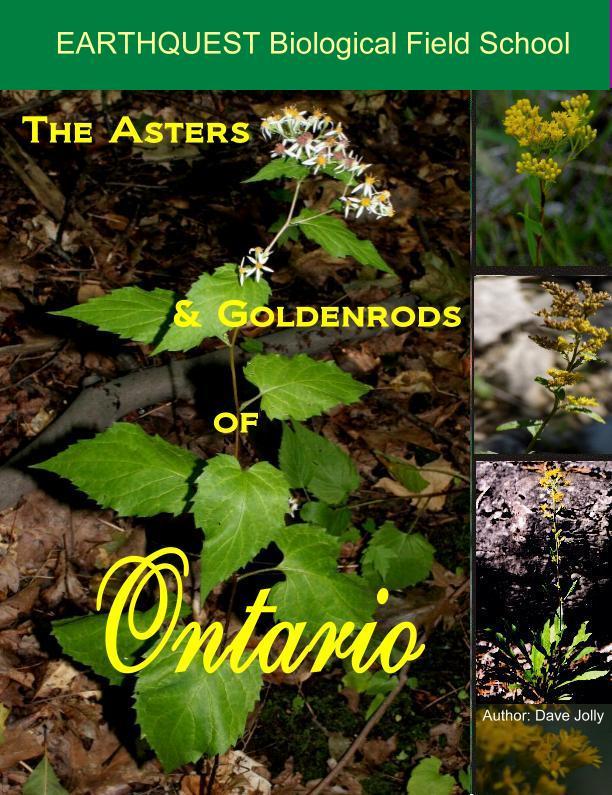
Photo: Dave Jolly for more information please click on;
Senior Instructor/Ecologist/Consultant & President D. Jolly, B.Sc.
| ||||||||
 EARTHQUEST (Canada) for the Environment
EARTHQUEST (Canada) for the Environment
